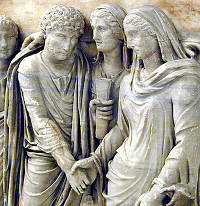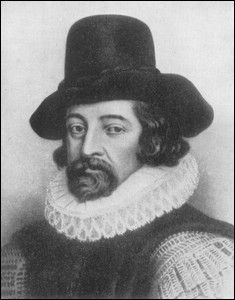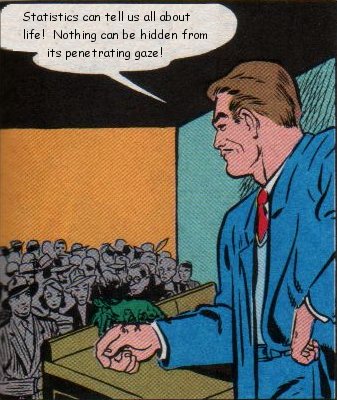A bit of a cable problem has prevented TOF from bedeviling the intertubes with his maunderings. But the problem is now fixed (or relapsed, depending on one's point of view). One feels like those movie characters who are constantly returning from the void. Like Godzilla, for example.
Be that as it may, TOF has not been idle. Indeed, he has learned several new forms of solitaire from a program he downloaded shortly before the fritz: to wit, Napoleon, Little Billy, and Montana. Self improvement is our constant guiding light. But, wait. Can a guiding light be
inconstant? This is profound and must be considered. Meanwhile, the tabs have been accumulated, and now we will work them off.
+ + +
Hard of Hearing
Here is a site that has
11 Sounds Your Kids Have Probably Never Heard. Maybe TOF sounds like a stuck record, or intends to dial a phone.
+ + +
A Flare for Radioactive Decay
It seems as if the rate of radioactive decay, long thought to be constant, is not so much.
It seems to fluctuate with solar activity. In particular, it may provide what economists call a leading indicator for solar flares, to the benefit of satellite communications and astronaut safety.
The new detection technique is based on a hypothesis that
radioactive decay rates are influenced by solar activity, possibly streams of
subatomic particles called solar neutrinos. This influence can wax and wane due
to seasonal changes in the Earth's distance from the sun and also during solar
flares, according to the hypothesis, which is supported with data published in
a dozen research papers since it was proposed in 2006, said
Ephraim Fischbach,
a Purdue University professor of physics.
+ + +
The Thing
 |
| A cuputer |
From TOF's office window in a former house, he could see a tree. (His present office is deep underground, in a sort of bunker and a window, should one exist, would provide a view only of the subsoil in which his present home nestles.) Back to the tree. Why did TOF see a tree? Could it not equally well be said that he saw the bark of the lower trunk of a gum tree (that being the particular sensation)? Could it not also be said with justice that TOF saw an ecosystem? A nice discussion of Aristotelian forms is found here, including a short discussion in simple terms of
III. Things.
So why did he see "a tree"? What makes a tree the thing and not bark or an ecosystem? Better yet, why is my tea cup a thing and my computer a thing, but the mererological sum of the cup and computer (we will call it a cuputer) is
not a thing? Why do we ask how a tea cup is made, and how a computer is made, but show no interest in how a cuputer is made?
(Is a tea cup also a computer? A limited purpose one, running the single program instruction: "sit there and hold tea.")
 |
| The Magnificent Seven |
If an apple, a peach, and a pear sit on the table why are there not
seven things on the table? {apple, peach, pear, appleach, pearapple, peareach, pearappleach} But we instinctively regard an apple as a thing and pearappleach as a not-thing; and we can legitimately ask what causes the apple to exist and
not what causes the pearappleach to exist.
And what does this say about what causes the universe to exist? Is the universe a thing in the first place?
+ + +
Wiki-wiki
TOF has discovered he is quoted on
WikiQuotes by several lines from Eifelheim. While flattered, he wonders if there might be other worthwhile quotes in his other books. Wikimavens are welcome to quote mine from
Razor's Edge, River of Stars, and other succulents.
+ + +
Higgs
Physicist Stephen Barr has an old article (
2008) and a more recent follow-up (
2013) on the Large Hadron Collider and why the multiverse is unsatisfactory in more than an etymological sense. The articles are eminently readable, especially the conceptualization of the Higgs as the "Higgs field" rather than as a particle. One's anxiety regarding the source of the Higgs' mass if the Higgs is itself the giver-of-mass to other particles is now salved. Perhaps the Higgs was called the God particle because in the essential causal chain it prevents an infinite regress of mass-givers?
+ + +
Primary Causation
Speaking of which, a
short essay on primary causation in contrast to secondary (or instrumental) causation.
+ + +
Silence is Disapproval
The
DoJ "tip sheet" for LGTB inclusion at work has the following tip:
7. Know How to Respond
If an Employee Comes
Out to You
DON’T judge or remain silent. Silence
will be interpreted as disapproval.
So you better damn well speak up in approval. If you know what's good for you.
+ + +
Adam and Ish
 |
| Ish and Ishshah |
On a site calling itself
Big C Catholic, the following etymological nugget was noticed:
The Hebrew word for Adam in the Bible before the arrival of Eve is man meaning mankind. Adam before Eve is genderless. Only later does Adam the male appear with the first woman Eve. The Theology of the Body puts it this way:
The Bible calls the first human being "man" ('adam),
but from the moment of the creation of the first woman, it begins to
call him "man" (ish), in relation to ishshah ("woman," because she was
taken from the man—ish).
Our personhood - being a subject before God - is more fundamental to who
we are than even our gender. In the Bible our personhood, our dignity
before God, comes before gender differentiation.
Aside from the confusion of grammatical gender with biological sex now endemic in Late Modern discourse, it was an interesting insight. TOF knew that in Arabic, the word adam mean "man" in the sense of a "human being" and not in the sense of a "male." TOF had not known that in the Hebrew, the man is called
adam only up to the appearance of the woman, after which he is called
ish. The choice was evidently deliberate to making a point.
+ + +
Matisse and the Medieval
 |
| Awkward and clumsy, per Renaissance |
In her book
Those Terrible Middle Ages! Regine Pernoud mentions that
"Artists like Monet and Cezanne were much closer to the painters of Saint-Savin or Berzé-la-Ville than to Poussin or Greuze; artists like Matisse lived long enough to become aware of this: "If I had been familiar with them, it would have saved me twenty years of work," he said when leaving the first exposition of Roman[esque] frescoes given in France, shortly after the war of 1940."
It was not that the so-called modern artists slavishly imitated medieval art the way the artists of the Modern Ages slavishly imitated Greek and Roman art. It was rather more a sensibility that they shared that they were not "locked in."
So Matisse was
not the only one to notice this linkage between Late Modern/Post Modern art and Medieval art.
+ + +
 |
| Summer reading assignment |
An Unreadable Book
The
Voynich Manuscript, unlike the fictional Peruzzi Manuscript of The Shipwrecks of Time, is not lost, or at least not precisely lost. It exists in the rare-book library at Yale University and is "written in a cramped but punctilious script and illustrated
with lively line drawings that have been painted over, at times crudely,
with washes of color."
Problem is, no one can read it. The writing is in an unknown script and many of the plants and such illustrated are of no known species. But a close study of the script reveals a natural language behind it. The book is divided into sections judged by the illustrations, and the words - symbol sequences - used in the section on plants differ from the words used in the section on the heavens. Likewise, the distribution of words and letters is just what one would expect of a natural language.
Where did it come from? Who wrote it? (There is more than one handwriting.) TOF's guess: it was written in Krenkish by shipwrecked travelers in the village of Oberhochwald/Eifelheim, perhaps as an encyclopedia, but others may not take that suggestion seriously.
+ + +
Defending the Rights of the Rich
The recent Windsor decision of SCOTUS has been hailed as a victory for something called "gay marriage." ("Marriage" is from L.
maritas, "a man who has been provided with a young woman," from PIE *-
mari, "a young woman," so you see there are definitional problems.) However, it was actually a
victory for the rich to keep more of their riches by ducking what Republicans have called the "death tax.
The Democrats used to claim this was overblown and really only the Very Wealthy™ were subjected to it. Yet in the Windsor case, a multimillionaire got to keep $3.5 million instead of a measly $3.1 million. TOF would be exuberantly happy to keep just the part that was tax: $363,053.
Here are the facts of the case: Edith Windsor inherited an estate of
$3.5 million from her partner, Thea Spyer. Windsor had “married” Spyer
in Canada, but—according to the provisions of DOMA, which defined
marriage as the union of one man and one woman for the purposes of
federal law (such as determining who is and who is not subject to
provisions of inheritance laws)—she was not exempted from inheritance
taxes, as would be a legally recognized spouse. Thus Windsor owed estate
taxes totaling $363,053.

The whole hoo-hah seems to focus almost exclusively on the availability of federal government benefits and tax breaks, that is "upon benefits that would advantage two childless adults (and wealthy
ones at that)," rather than upon the formation of a stable environment for the raising of children. Of course, folks go to great lengths these days to avoid children, so it is hardly any wonder than no one seems to mention such things. It is part and parcel of the governmental takeover of people's lives. Marriage is now seen as a government-defined benefit rather than as a natural biological process that long pre-dated the formation of the State.
Want to astonish your friends and neighbors? Remind them that not until the 1870s did National Governments begin instituting civil marriages. (This was about the same time that Fichtean public schools were taking over the education of the young.) Revolutionary France, where you could be guillotined for having your child baptized, was an early forerunner of the trend; but many States of the USA did not even start registering marriages until 1900. Naturally, when governments begin micromanaging something, they usually start to fiddle with it until they break it. NASA started off well, too.
+ + +
The Shipwrecks of Time
Work is now proceeding apace, and a progress report shall be posted shortly.





















